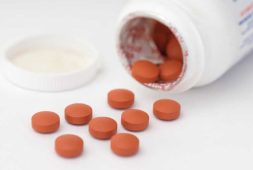
Cancer takes the lives of millions of individuals each year. We have yet to find the perfect cure for it so that we can eradicate the disease for good. While doctors and researchers still have a long way to go when it comes to uncovering the cure, they have uncovered many of its secrets and in their efforts, they have come across medicines that may help the sufferers.
New research, in fact, has tested the benefits of a diabetes drug when used in combination with chemotherapy, especially against skin cancer.
Timeline
- In the 1950s, doctors started prescribing a drug called phenformin to people who suffer from type 2 diabetes. This is said to be extremely potent and it also came with a variety of side effects. the safer alternative, metformin, is available nowadays and is more commonly used by people.
- Both the phenformin and metformin medicines have shown promising results as an ally to anticancer agents. This has been observed in laboratory studies. However, the predecessor does appear to be more potent.
- Researchers are now testing a combination of phenformin and chemotherapy drugs in those who suffer from a certain type of skin cancer.
From Then to Now
In Medieval Europe, herbalists then met with people who suffered from excessive urination, or polyuria, and prescribed French lilac (Galega officinalis). With modern knowledge, we’ve come to know that this is a symptom of type 2 diabetes.
In the 20th century, hundreds of years after, researchers were able to successfully isolate the active ingredient found in the plant. This eventually became the beginning of the development of drugs called biguanides. Its main function was to lower blood sugar in for those who suffered from diabetes. Doctors first prescribed one of these biguanides called phenformin in the 1950s.
Those who suffered from high sugar levels took phenformin for a while. Unfortunately, regulators withdrew the drug in the late 1970s. They had found that it could actually lead to unwanted side effects. Phenformin caused a potentially fatal buildup of lactic acid in the blood for some of those who took it. This was medically known as lactic acidosis.
In 1995, the Food and Drug Administration (FDA) approved a safer biguanide in the form of metformin. Since then, this has become the most prescribed drug for sufferers of diabetes in the United States. A decade later, remarkable findings have been further uncovered. Scientists found how metformin may also have antitumor properties aside from having the ability to lower blood sugar. A retrospective study was made in 2005. The researchers from the United Kingdom noticed how people with diabetes and had been taking metformin appeared to be less likely to develop cancer.
Laboratory-based studies were also made and these subsequently demonstrated how both metformin and phenformin have antitumor activity. Clinical trials using metformin for treating cancer were unfortunately disappointing. In a new review article found in the journal Trends in Cancer, however, researchers at Massachusetts General Hospital (MGH) in Charlestown made an argument and stressed how phenformin may actually be more potent than metformin when fighting melanoma, or skin cancer.
Immunotherapy Combination
senior study author Dr. Bin Zheng, Ph.D. claims, “While the outcomes of various clinical studies of metformin in cancer patients have been underwhelming, research from our laboratory and others suggests that phenformin may have greater potential, particularly in combination with immunotherapies.” Dr. Zheng is an expert and an investigator in the Cutaneous Biology Research Center at MGH.
Immunotherapies include a variety of drugs such as checkpoint inhibitors. These allow the immune system to recognize cancer cells and targets them. The idea behind the study is how immunotherapies can enhance the potency of chemotherapy drugs that are able to target cancer cells directly.
Dr. Zheng knows that while phenformin is more toxic than metformin, it is also relatively safe when placed in the context of chemotherapy. He states, “Phenformin demonstrates more metabolic and pharmacologic potential than metformin, and its toxicity, which might be a problem for certain people with diabetes, is actually lower than some current chemotherapies.”
Dr. Zheng and colleagues performed laboratory-based studies. During their time, they discovered that phenformin, and not metformin, enhances the ability of drugs called BRAF inhibitors to suppress the growth of a common type of melanoma. About 50 percent of all melanomas have changes in a gene called BRAF. These changes allow the cells to multiply uncontrollably until it can be difficult to manage. As the name of the medicine suggests, BRAF inhibitors are able to counter and oppose these effects. Basically, they putting the brakes on the replication of the cancer cells.
Clinical Trials Made in Cancer Patients
MGH and the Memorial Sloan Kettering Cancer Center have launched a the first phase of the clinical trial. This trial used phenformin and a combination of inhibitors in people with BRAF–mutated melanoma. They came up with specifications during this time. And if the trial shows that phenformin is safe in this context, researchers may then combine the use of other chemotherapy drugs or immunotherapies to be made in clinical trials made after. These trials will also look into other types of solid tumor, such as non-small cell lung cancer.
In the review article made by the researchers, they hypothesize how biguanides such as phenformin could work, at least in part, by changing the gut microbiota. The term refers to the community of microorganisms that are found in the gut, an important aspect to be considered when it comes to overall health. The researchers also write that metformin’s effect on the gut microbiota could possibly contribute to its ability to lower blood sugar for those who suffer from type 2 diabetes.



